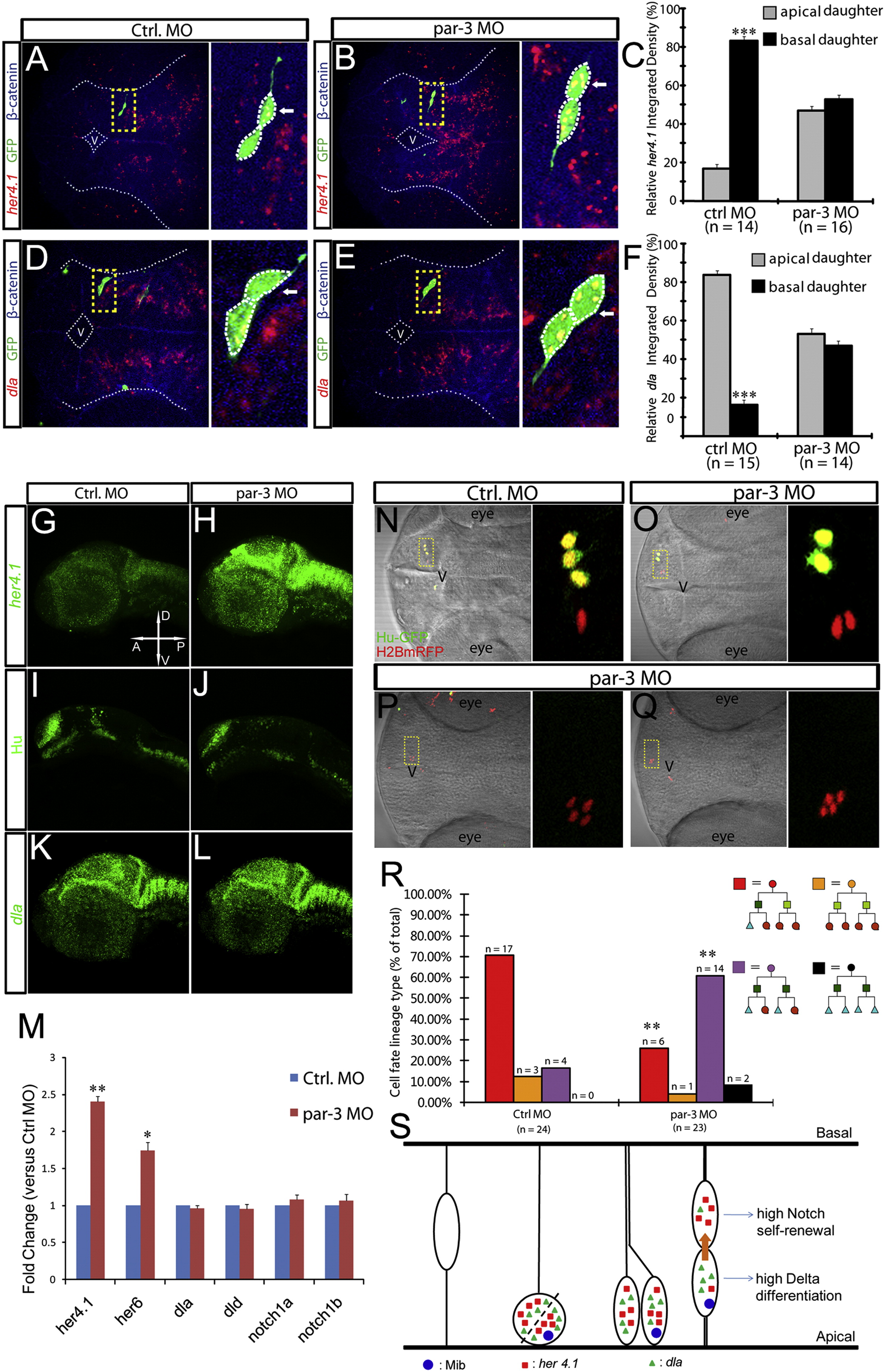Fig. 8
Par-3 Is Essential for Restricting Notch Activity to the Basal Daughter Thereby Limiting Self-Renewal(A–F) her4.1 (A and B) or dla (D and E) expression in control (A and D) and par-3 (B and E) morphants. (C) and (F) are quantifications. ***p < 0.001 versus apical, t test.(G–L) Expression of her4.1 (G and H), Hu (I and J), and dla (K and L) in control (G, I, and K) or par-3 morphants (H, J, and L).(M) Quantitative reverse-transcription PCR shows relative fold change of her4.1, her6, dla, dld, notch1a, and notch1b in control versus par-3 morphants. *p < 0.05, **p < 0.01, versus Ctrl MO.(N–R) Transplantation similar to that described in Figure 5B was carried out. Representative image of four-cell clones derived from control (N) or par-3 morphants (O–Q) in otherwise wild-type brains. In control the single clone is composed of one progenitor (red) and three neurons (green), whereas par-3-deficient clones contained fewer neurons (green) and more progenitors (red). (R) Quantification for (N)–(Q). **p < 0.01, versus Ctrl MO, z test.(S) A model for regulated self-renewal and differentiation in asymmetrically dividing radial glia progenitors. See Discussion.Error bars in (C), (F), and (M) represent SEM.See also Figure S7.

